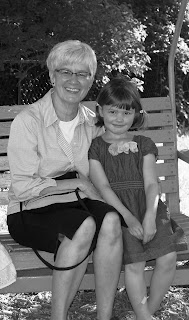As summer winds down and we get ready to head "back to school", we wanted to take this opportunity to offer a few general tips to help ensure a fluid transition. Whether you're a new family just starting out or a current family returning for your second, third or even fourth year, we've put together a list of what we hope are some helpful suggestions. Here's the first:
The Week Before School
Before school starts, we recommend that you talk positively about school. Often, "going to school" can be subjected to negative connotations in our society, especially when high school students are involved in the equation! As adults, the same thing could be said for, "going to work". To combat this, and to foster a positive appreciation of school, you can use favorable expressions like, "Next week, you get to go to school!"
Another tip is to drive by the school, pointing it out as you go about your daily routine. Keep the conversation enthusiastic and upbeat. Try to relate to your own childhood experiences. Here's a sample: "I was always so excited to go to school, meet new friends and learn new things." If you want to add in the part about walking uphill there and back, that's up to you! As school becomes more familiar, it will become less of an unknown.
Also, however hard it is to imagine, it's also probably a good idea to start getting back into a routine, going to bed at a reasonable time, and starting to wake up in anticipation of the many awesome things that are going to happen this school year! With that said, enjoy the last few days of summer!
The Week Before School
Before school starts, we recommend that you talk positively about school. Often, "going to school" can be subjected to negative connotations in our society, especially when high school students are involved in the equation! As adults, the same thing could be said for, "going to work". To combat this, and to foster a positive appreciation of school, you can use favorable expressions like, "Next week, you get to go to school!"
Another tip is to drive by the school, pointing it out as you go about your daily routine. Keep the conversation enthusiastic and upbeat. Try to relate to your own childhood experiences. Here's a sample: "I was always so excited to go to school, meet new friends and learn new things." If you want to add in the part about walking uphill there and back, that's up to you! As school becomes more familiar, it will become less of an unknown.
Also, however hard it is to imagine, it's also probably a good idea to start getting back into a routine, going to bed at a reasonable time, and starting to wake up in anticipation of the many awesome things that are going to happen this school year! With that said, enjoy the last few days of summer!


























.jpg)















